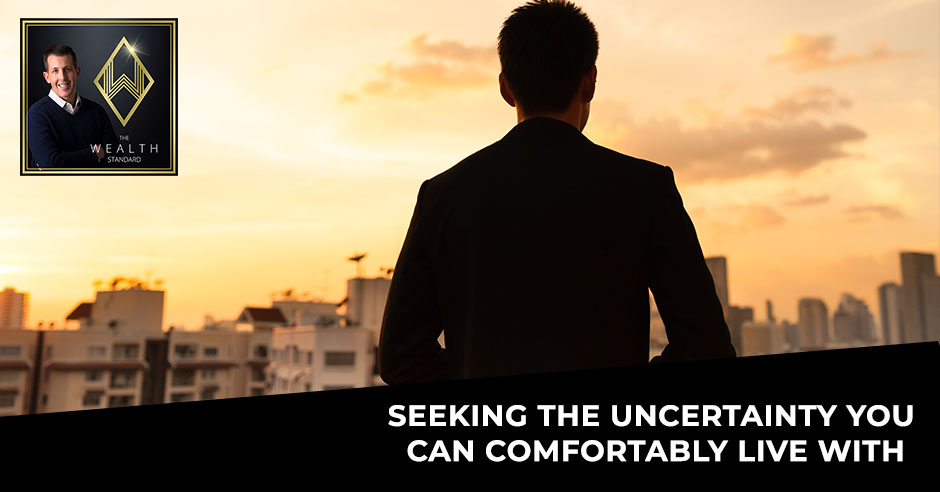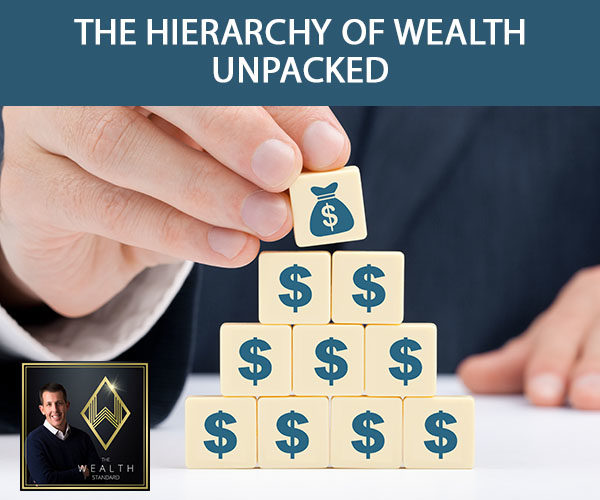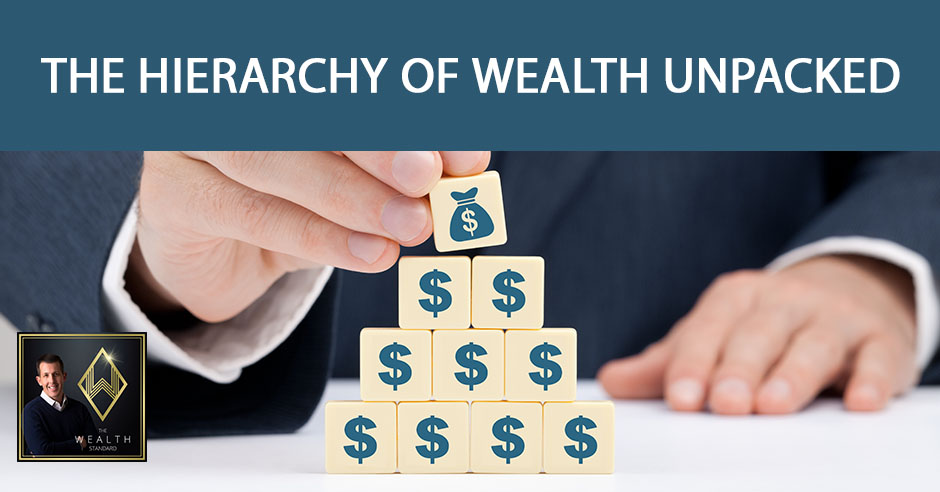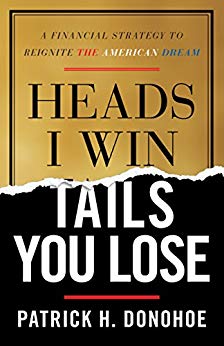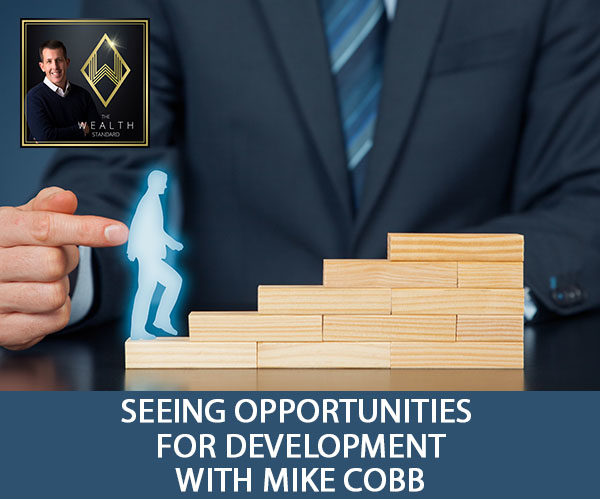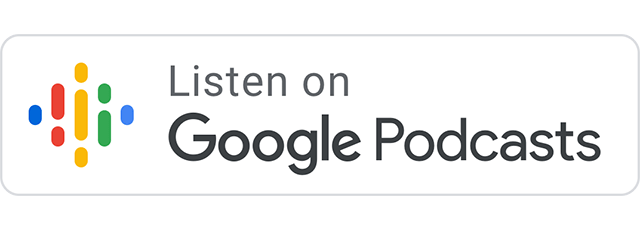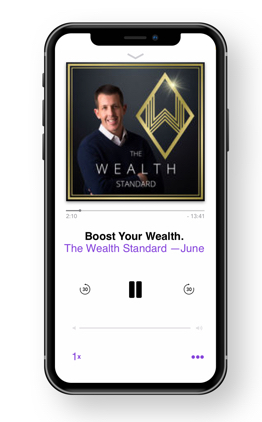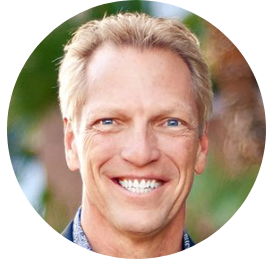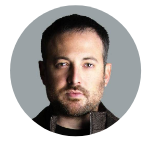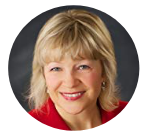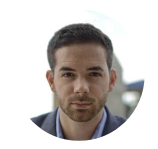Podcast: Play in new window | Download
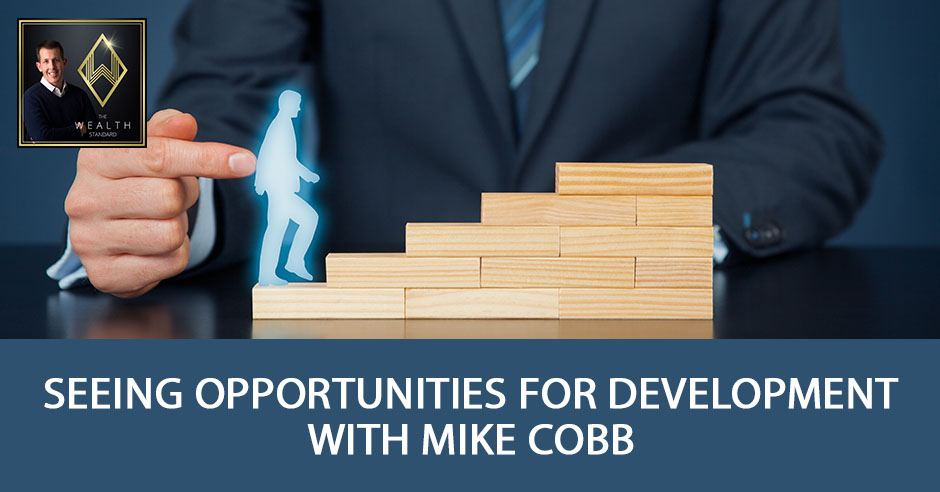
There are so many opportunities in the world. All we need is a discerning eye that knows how to make something out of what we see. Mike Cobb, CEO, and Co-Founder of ECI Development and President of Gran Pacifica, talks about opening doors for development. Sharing his background and uprooting his family living outside of the United States in Nicaragua, he talks about the many opportunities the world has to offer for investors to grow. Mike discusses the emerging markets, most especially in Central America, as well as traveling to developing countries and creating environments where people could have experiences. Taking something and creating a business opportunity out of it, Mike engages us in a teak conversation about how this wood works and what opportunities it offers as far as how it is used.
—
Listen to the podcast here:
Seeing Opportunities For Development with Mike Cobb
I was fortunate to be in Southern Florida at an incredible event put on by Tony Robbins called Date with Destiny. It’s my third event with Tony and I’m with my wife as well. I’m going to save this experience for another day. We’re going to do a bonus episode with my wife. We have the second to final episode of season three. I hope you had enjoyed 2018. I didn’t plan for this fifteenth episode with my guest, Mike Cobb, but it worked out perfectly. I have known Mike for years. He wrote an article at the beginning of 2018 with the topic of what we’ve been discussing on here, which is by John Locke. It’s, “Life, liberty and the pursuit of property.” I met Mike a few years ago on an investment cruise that we were both speaking at. What a stellar guy. The energy level he has, the knowledge he has, the experiences that he has gone through.
I’m going to add one of the variables that are the most unique and certainly the most valuable, which is the understanding of principle and understanding of history, understanding of humankind and our capacity to take this human experience and learn how to take our knowledge and our intellect and our talent and our ability and the material world around us and create an incredible life. You’re going to read some cool stories and you’re going to read about something that you didn’t know about before, which has to do with a very long-term time of investment in the forestry space.
—
You are in for a treat. My guest is Mike Cobb. Mike is the CEO and Cofounder of ECI Development and President of Gran Pacifica. Mike and I met a couple of years ago on The Real Estate Guys Investors Summit at Sea. We also connected at another event in Bermuda. Mike’s an awesome guy and you’re going to hear a little bit about his background. Mike, welcome to the show. Thanks for joining us.
Thanks, Patrick. It’s nice to be here.
You were passionate about uprooting your family and living abroad outside of the United States over a decade ago. Can you give us a little bit about your background and what led up to that?
I grew up in Western Pennsylvania north of Pittsburgh. I graduated college in ‘86 and unfortunately it was a depressed area of the country. I moved to the DC area. I worked in the computer business for several years on the PC side of things. In ‘94, I went to Belize for my first trip on vacation to have some fun with a buddy of mine, the Cofounder, Joel Nagel. We bought a couple of condos and started to rent them out. What we saw interestingly was that there was no mortgage money for North Americans in Belize generally. The bank up in the States or Canada would not lend money on collateral in Belize and the bank in Belize didn’t want to lend money to foreigners. You had this weird hole in the marketplace. We started a little mortgage company in 1995. I went out to a bunch of my buddies in the computer business, raised some money. Joel went to a bunch of his clients, we put the other couple of million bucks and we started buying mortgage paper all over Ambergris Caye. It was a phenomenal business. The paper was usually two to four years to mature, 12% to 14% interest rates. We were buying for $0.80 on the dollar.
It was a great business. Joel was the deal guy. He’s the money, finance side of things. I’m the more boots on the ground guy. What I did was I ran around and looked at the collateral. I would go and look at these condos and these homes that had been bought a year to four years. What I saw was incredible. You’d walk into a living room and there would be an outlet on the wall. There’d be two outlet strips, one going each direction. With extension cords plugged into the outlet strip running around the edges of the wall so that you’d have power all the way around the living room or a bedroom. They had one outlet in the living room or one in the bedroom. The door handles are at different heights and kitchen countertops too high, too low, whatever it was. We started to put our heads together and we said, “To fix this stuff is almost free.” Put all the door handles at the right height, to get the countertops the right height, put the mirror centered over the sinks, simple stuff.

Opportunities For Development: The time machine is an imaginative concept. The more technical word is path of progress.
We started the development company in 1998. We bought a small resort in Belize. I moved to Belize with my new wife, Carol. We didn’t have any kids at the time. We lived in Belize for a few months. We turned the property around and then move back to the States. In ‘98, ‘99, I did a lot of work in Panama on a tea plantation. In 2000, we bought a giant piece of property in Nicaragua one hour west of Managua, the capital. I say giant. It was three and a half miles of Pacific beachfront and the property is a mile deep. It’s a 2,500-acre property. In 2002, it was time to get down there. We’d done the initial permitting and master planning. My wife, Carol, my daughter, Amanda, who was two at the time, we literally picked up and left Shepherdstown, West Virginia where we own a home. The same home, we kept it. We moved to Nicaragua for what we thought would be two to three, maximum four years to get a company started. We did. We went down there and we hired architects, engineers, a chief operating officer, accounting people, IT, marketing and the whole thing. We put all the team together.
About three and a half years into it, my wife and I go out to dinner one night. We took a piece of paper. I know you’re a big Tom Hopkins fan. I’m a big Tom Hopkins fan. We took that piece of paper, we drew the line down the middle and we did the old Ben Franklin. Stay in Nicaragua, go back to the US. The list to stay went down the front and onto the back. The list to go back to the States was a third of the way down one side. We ended up staying in Nicaragua another several years by choice. It was an incredible quality of life. The cost of living was silly cheap but the quality of life was higher, which is paradoxical. How can you have a higher quality of life with a lower cost of living? It’s possible in the developing world and we did. We moved back to the States a couple of years ago. One of my daughters, my eldest, Amanda, was fifteen. She got accepted into a ballet program in New York City. Mama bear was like, “We’re not living in Nicaragua with the baby bear in New York City.” We came back to Shepherdstown and we’ve been here for the last couple of years.
Your perspective on what’s going on in emerging markets is intriguing. My wife is from Mexico originally and grew up there. I grew up in the Northeast. The differing perspectives helped me. I had a bigger view of the world and how people live. We see innovation all around us in the US. Oftentimes because of how big the world is, we’re seeing what’s on TV as far as how to determine what type of growth is occurring or what’s going on outside the US. Why don’t you talk briefly about what you saw in emerging markets, specifically the Central America markets? What are you seeing? You raised your kids in Nicaragua. You say that to a normal person they look at you funny, which I’m sure people have looked at you funny in the past. Talk about that and what your experience is versus the stigma that’s out there.
The best concept I can put around this is a time machine. Going to a country like Costa Rica, Panama, Nicaragua, Belize, anywhere in Central America is literally like getting in a time machine. In my presentations, I sometimes will ask this question. I say, “If HG Wells stopped in the middle of this room with this time machine and we could all jump on it. Take one check and go back twenty years. We could all make one investment. How many of us would come back to this moment wealthier?” Everybody puts up their hand or a few people are a little slow and they don’t know. The hindsight’s 20/20. What we see in the developing world, Central America specifically in this case, is we see the time machine concept. That’s the more imaginative word that I use, but the more technical word is the path of progress.
A country like Costa Rica and Panama are pretty far up this curve. Panama because of the Canal and we’ve had US military presence there for 100 years. Costa Rica because many years ago they jumped on the bandwagon of tourism and promoted themselves as a tourist destination. They have moved up this popularity curve, the path of progress curve. Whereas a country like Belize is a little further down and a country like Nicaragua is far down. If folks want this curve, I’ll send it to you and you can forward it onto folks. It’s a pretty powerful visual tool because here’s how I put the countries on it. What I said to myself was, “Where do people from Utah or Midwest America or wherever take their honeymoons?” Pacific Coast to Costa Rica, absolutely. People going to Costa Rica for their honeymoons, there’s a Four Seasons or Westins. It’s fully on. Panama is almost there too. There are lots of people taking their honeymoons in Costa Rica, but not a lot of people taking their honeymoons in Nicaragua.
I know a lot of your audience is cashflow people. What you’ve got to understand is that where you have popularity, you have cashflow. You have people coming and renting. Where you have less popularity or somewhere in the middle, fewer renters, less cashflow but it’s priced into the marketplace. You get into a country like Nicaragua, it doesn’t cost much. For example, an oceanfront condo on one of the ten best surf breaks in Central America. It’s been on the cover of The Surfer’s Journal, Kelly Slater films there. This is world-class surf break, empty. Oceanfront condo, $129. Will you get the cashflow you would get in Costa Rica? No, you’re not going to get the same average daily rate. You’re not going to get the ADR. You’re not going to get the occupancy rate yet. As Nicaragua climbs the curve, what’s your cost basis? Your cost basis on that’s $129. That same condo in Costa Rica costs you $350. You start to run those numbers. I’m a big fan of diversification. You should have a little bit of both. Plug either place real hard. Get some across that whole spectrum. The path of progress is to be the single most important takeaway at 30,000 feet, time machine. I’ll give your audience the best tip. The first person who puts that Dairy Queen in Nicaragua is going to clean up. We have McDonald’s, Quiznos, Subway, TGI Friday’s, all these chains but there are no Dairy Queen.
Countries or destinations, there’s a brand. In and of itself, it’s a brand. If you think of Costa Rica, something comes to mind. If you think of Nicaragua, something comes to mind. If you think of Guatemala, something comes to mind. If you think of Mexico, something comes to mind. I look at Costa Rica and how beautiful it is and it’s a supply and demand issue. The reason why you can get a beachfront condo there is because there’s only so much beachfront and it also has brand recognition. When you have more people going, which is increasing because of the older population retiring and wanting to travel and go on cruises and so forth, that’s when essentially at some point doesn’t make sense because there’s only so much beachfront.
That’s where you look at similar destinations. Case in point, who knows where Belize is? Most people know where Mexico is. Most people know where Panama is because of the Panama Canal, but where’s Belize? Most people don’t know that, but it’s coming online because it embodies some of the characteristics of some of those popular destinations. There are others, Nicaragua is one. I have some friends that are in Guatemala and they’re doing these pictures of these huge mansions that they’re staying in. How beautiful they are for the cost of a hotel room in Costa Rica. It’s one of those things that Central America specifically, despite its issues which are in the headlines, is coming into its own and appeasing the demand that’s out there for beautiful places to travel to.
Belize was the first place I did business. I still do business there. Belize on that curve is in the sweet spot. It’s not as mature as Panama or Costa Rica. It’s not as unpopular as a country like Nicaragua. It’s in the middle, so it’s got cashflowness now. Southwest started flying in. They’ve opened up some new routes coming from Denver, they’re from Fort Lauderdale now and they’re in from Hobby Houston. WestJet in 2017 opened up from Toronto. They’re opening up from Calgary. You have these discount carrier airlines coming in, bringing the more mainstream tourists to a country like Belize. We’d been working there since 1994. When I moved to Belize with my wife, we lived in this little tiny resort on Ambergris Caye. A few years ago, we bought the property next door. We’ve since signed a franchise agreement with Marriott Corporation and we’re in the development phase. We’ll be into construction Q1 of next year for a Marriott Resort and Residences on Ambergris Caye. The market is ready for it. Years ago, the market would not have been ready for a Marriott-class hotel.
The folks you’ve talked with on your program before, they’re working with the Curio Hilton product there on Ambergris Caye. There’s a Marriott Autograph under construction as well. We’re seeing this interesting transformative moment in time in Belize. I wrote an article on this concept of the timing of that sweet spot of the marketplace and how the market has transformed over the many years since I’ve been working there. It’s neat to watch these things happen over a couple of decades and be a part of that transformation as well. To help folks like your audience to see these opportunities. Understand what these opportunities are and how they might best fit depending on their investment goals are. Some people like cashflow, but they’re willing to take less percentage cashflow but a more certain cashflow. People want to take a little riskier, buying in it cheaper and other people want the sweet spot. Knowing this big picture concept allows people to put themselves in the spot that best fits their investment goals, which is what you’re all about and what we’re all about. It’s all about the client. How can we help the client get what they are looking for in terms of an investment and a return type?

Opportunities For Development: At the end of the day, what businesses are all about is the client.
This is where I talk to you about the theme that we’ve been using in 2018. It continues to fascinate me because there’s a saying that we’ve used. John Locke was a philosopher in the 1700s, “The pursuit of life, liberty and property,” in which ultimately became part of the Declaration of Independence. Back then, we’re losing in Europe, which is still under the semi-authoritative rule. Talking about how a person can use their mind when they have freedom and essentially develop the property into something that’s valuable to other people. Those such as yourself who see the beauty in these different countries whether it’s Nicaragua, Costa Rica, Panama or any other beautiful place and figured out ways in which you can create a resort. Create an environment where people could have experiences.
It’s profound and that’s where I look at. You’ve opened the doors and others have opened the doors of development, which has allowed bigger brands to come in. Those bigger brands don’t need to take those types of risks. They essentially look for opportunities to piggyback on the risk that has already been taken. I look at the development of Central America and those beautiful places all year round and how desirable they’re going to be for the growing population of travelers and vacationers. You can make any comments you want in regard to that. I wanted to talk about something that I find fascinating with what you’re doing in regard to teak, which plays into this whole idea and whole theme too of taking something and creating a business opportunity out of it. Maybe speak to the comment I made in regard to the development of these beautiful places in the world then we can get into the teak conversation.
I wrote an article for the National Association of Realtors. I was the Director with the National Association of Realtors and now serve on their Global Business and Alliances Committee. I wrote an article about that whole part of why real estate is an incredibly powerful foundation for the United States. Jefferson tweaked it when he changed it to happiness, but the property was the foundation for that concept and private property specifically that allows people to take and find the highest, best use and then serve clients. I’ve been a student of the development process and I’ve given some presentations on a Semester at Sea about this exact topic. There are a lot of great books out there. One that is powerful and you’re probably familiar with Hernando de Soto, The Mystery Of Capital. It’s a phenomenal read that in my mind encapsulates the development process or the development challenges in Central and South America or the developing world.
Companies like ours come in, we address the risk factor. We bring technology. It’s a mental technology. It’s a process. It’s a system of development, but it’s also a philosophical construct in the sense that we bring the idea that the pie can get bigger. A lot of the developing world is zero-sum or the pie is big. If you get any, I get less. There is no bigger making of the pie. Curio Hilton, the Marriott Autograph, these are my competitors. We understand as North Americans that the McDonald’s on one corner does okay. You stick a Burger King, KFC and a Wendy’s on the other three, all four do better. All the car dealerships are on that same highway somewhere. These are philosophical constructs that we bring. It’s a technology that we bring as foreigners into the developing world and probably as much as our money. Certainly, our money’s important because capital is an issue as Hernando de Soto draws out well in his book.
Capital is important, but intellectual capital is equally vital to the process of progress and development as we would define it in the United States. It’s what gets me up in the morning. This is what motivates me. We want to make money. We’re a company. We’re in business to make money and serve our shareholders and clients, first the client and then our shareholders. At the end of the day, that’s not what gets me out of bed and gets me excited. It’s this ability to come and be transformative to a developing country with both the money and the intellectual capital as well to change how it’s viewed and how things are done.
That’s what Locke meant. He understood this internal drive of humankind to create. Once you have that lens, you can see. I was watching The Jungle Book with my son the other day. Mowgli, what separated him from the animals? It’s his ability to think and come up with solutions. Locke understood that. He also understood the restriction is going to be the environment in which it takes place. Where if you do have a monarchical rule, they’re dictating how you live therefore that part of your drive is going to be suppressed. When there is freedom, when there is an opportunity and then you combine capital with it and property, that’s when there are some amazing things that can be created from it. There are examples of it everywhere.
Going to your business, development of actual real estate property is a feat in and of itself. I don’t think most people understand or value what goes into effective development of something that could take six months, nine months, a year and how all the different parts and things need to be orchestrated. There’s much beauty in how you take something that doesn’t exist and turn into something that does exist or at least exists at a fundamental rudimentary level and then turns it into something that’s a desirable place to go visit and create memories. It’s fascinating to think through. Let’s talk teak. Teak fits into the same idea. When people think of teak, it’s like, “Wood or is that a stain?” Tell us about your passion with teak.
There is one answer to that question. The answer is people. The answer is your team. The team is what translates an idea, business plan, and concept into reality. It’s all about the people and we’re fortunate to have an incredibly powerful, sophisticated and dedicated team on the ECI company. Teak is cool because I didn’t know anything about it. Back in 1998, we read an article by Kathy Peddicord. She wrote an article about teak as a reforestation product. Both Vietnam and Panama had a reforestation program. There were a group of six guys. We all got together and said, “Let’s throw in some money. Let’s do this teak thing.” We flew over to Vietnam for several days. This was ‘98. This is early Vietnam changing. What we realized was it was way too far. The timezone was exactly twelve hours or whatever opposite East Coast. It would’ve been a real nightmare to manage.
We also went down to Panama and we saw that the reforestation center programs there were pretty strong as well. Being the boots on the ground guy, it was my job to go and begin to figure this out. The other guys all had jobs. Joel was a lawyer, I’m boots on the ground guy so, “Go figure it out.” This is the long before Google, ‘98. I live about an hour and a half west of Washington DC. I live in the Shenandoah Valley. Back then, I did a couple with that many years in the middle of Nicaragua. I went down to the Library of Congress and I got a bunch of books on teak. What I found was teak has been raised in the plantation by the British starting a few hundred years ago in India, what was then Burma, Myanmar now, Indonesia. These books that I was referencing were incredible because they had a few hundred years of statistical record keeping of soil conditions, weather, rainfall, altitudes, on and on. I got smart enough to be able to go to Panama and interview forestry companies about taking on our project. Helping us find a piece of property and then managing. I knew I scratched the first layer of the onion, but I needed to at least understand if somebody was blowing smoke at me on their answers to some of my questions.
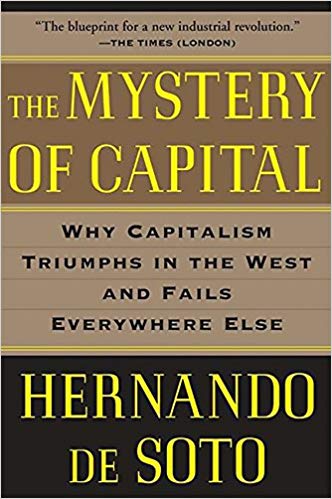
The Mystery of Capital: Why Capitalism Triumphs in the West and Fails Everywhere Else
The company we ultimately selected is a company called Geoforestal. One of the principal reasons is they answered all the questions. They’ve been in business well. They were the company that grew the seedlings that most of the other forestry companies in Panama used to plant plantations. They were getting into the management side of things. We took a little chance on them, but they’d been in the nursery business for a long time and the genetics side of the teak. We hired them and we bought 100-acre cattle pasture. It was grass and brush and we cleared it. The forest company planted some number of teak trees and sat back for the last many years. The forestry company manages it. They thin it, they take care of it. This would have been ‘99. The trees went in the ground in July and August of 1999.
I’m in the Rotary Club. I live across the street from the Bavarian Inn. It’s right on the Potomac River. They have the Rotary meeting there every Tuesday morning. I’d slip across the street at 7:00 and eat breakfast until 7:30. The bell rings. You have your Rotary meeting. From 7:00 to 7:30, there’ll be a table of eight or ten folks and like, “Mike, you missed the meeting last week. Where were you?” I said, “I was down in Panama.” They said, “What are you doing in Panama?” I said, “We bought this farm. We’re going to plant these teak trees and in 25 years we’re going to cut them down and we’re going to make a lot of money.” The heads would shake and they’re like, “Your crazy, Cobb. What are you doing? Panama? 25 years?” The answer I got finally after a couple of weeks of hearing this nonsense around the tables was like, “In many years, I’m going to either need this money and be glad I did this or in many years I’m not going to need the money and I’m going to be glad I did this.”
Many years later, I’m glad I did this. Our trees are big around. They’re fourteen to eighteen-inch diameter and they’re 60, 70-feet tall. Our trees are average. They’re doing what they’re supposed to do. They’re growing. In a few more years, we’re going to harvest them and make a ton of money and we’re going to replant. In fact, I’ve got a guy headed down there to look for a new property. We’re going to pick up another 250 acres and plant another plantation in Panama. We’re doing the same thing in Nicaragua. We’ve planted about 60 acres of our Gran Pacifica property. We’ve surveyed off another 45 to plant this year. We’re continuing to plant teak because teak is one of those incredible investments.
You’re a Kiyosaki fan. I’m a Kiyosaki fan and the rental and the cashflow and that stuff are important. When we think about cashflow periods, most of us think about maybe it’s every two weeks we get a paycheck. Every month we get a rent check from somebody if we’re doing the Kiyosaki cashflow thing or we have stocks and bonds and we’re not a day trader. Maybe we’re moving in and out of those annually or every rate. Our periods tend to be a couple of weeks to maybe a couple of years. The thing about teak that I love and it’s not something you would do a lot of your money with. A small piece of your assets goes into what I call the 25-year cap flow period.
There’s nothing in the middle. They grow and you cut them down. You create this huge asset. You cut them down, you plant them again. In 25 years, you come down for the next generation. One of the tabs on your website is legacy. Teak specifically for us because we liked the region of Central America and teak grows exceptionally well in those latitudes of about ten to twelve degrees. Panama sits at 9.86, it’s right there at ten. Perfect rainfall, perfect soils, it works well. I have stocks and bonds. I have a 401(k) and I’ve got other investments. I’ve got properties at that two-week cashflow, one-month, two-year cashflow. We all need that in our lives.
Someday when I die, if I died now, my kids would be fourteen and eighteen. Hopefully, they wouldn’t go sell off all my stocks and buy Ferraris and Lamborghinis. I won’t be around. I don’t know what they’ll do. The nice thing about teak is even in a few more years, they’ll be twenty and 24. They’ll be more mature. Even if my two daughters had blown the money on Lamborghinis or whatever it was they bought, it gets replanted. In 25 more years when they’re in their 50s, they’re going to get another harvest to proceed and presumably they’d be a lot more mature and be able to steward that money better then. It gets cut down, it gets replanted and maybe the next ones for their kids. It’s a powerful generational wealth stewardship tool precisely because it’s not liquid. Everyone’s always, “Liquidity.” It’s important. I get it like most of your portfolio. If you can take 5% or 10% of your portfolio and lock it up and make it illiquid, I personally believe you are doing future generations an incredible favor. You’re locking it up and keeping it out of the hands of late teen, early twenty-year-old kids.
Sometimes we’ll classify these types of assets as perennial assets, which are assets that ultimately last forever. Sometimes it doesn’t appease the short-term intrigue people have with regards to investment. It doesn’t mean that they’re not valuable. In a sense, they’re even more valuable. What it does is it plants this one investment that will have consistent dividends which will require probably little to no increase in operational expenses, barring inflation and cost of living increases. It’s not to say that’s an asset that’s boring. When you compare it to a lot of the investment that has been made over the last many years, which is mostly in real estate and markets where there is good rent to value ratios, that’s where you have a lot of opportunity for short-term gain, but yet they’re not perennial assets.
The example I gave to you is if you buy fifteen homes in Columbus, it’s going to outperform a teak investment in the short-term. 25 years from now, I’m not sure how valuable those homes in Columbus will be without massive amounts of operational costs and improving expenses. The idea is it’s a different type of investment. This is more of a legacy perennial type of investment, whether it’s a farmland or timber or another mineral type of investments. There are lots of opportunities there. What I found fascinating is you’re intrigue getting into the research at the Library of Congress into the nature of teak and why it’s desirable. If something takes that long to harvest, that’s an asset that you are not going to have much competition in because of how long it’s going to take to play out. Talk about how teak works and what that opportunity is as far as how it’s used, what the demand is and so forth.
That is one of the things. If all of a sudden in 2019 or the year after teak becomes even more in demand, you can’t rush out and make it. You had to have planted them many years ago. It takes foresight and it takes the ability to understand that these products should. It’s a future event. We all understand the investment concept of a future event. Who knows? Nobody can predict the future. The nice thing about teak with a 350-year track record, it’s been in the plantation, it’s been in demand for a few hundred years. Teak has increased in value by about 5.50% a year on average for 100 years. It’s got its ups and downs, it’s a commodity. It moves up and down. 5.50% per year growth in the value of teak, we’re talking about the growth of the tree. We’re talking about lumber sold as lumber, 5.50% a year. You have the actual growth of the trees. The kinds of IRRs when you run those numbers are double digit.
It’s 10% to 12% IRRs over 25 years. You’re talking about compounding over 25 years at that rate. It’s huge and the easy numbers. $50,000 turns into a little over $1 million round number things. The idea is that it doesn’t take much to get in now, but the legacy you leave for the kids, grandkids in 25 years are significant. Teak is a unique wood in the sense that it’s impervious to rot, fungus, molds. It’s a hardwood and it has high oil content. In fact, for centuries they used teak for dominant wood in the oil industry because it didn’t spark. It had some curious industrial uses. We’re most familiar with it with boats. The chairs on the Titanic as well as the decks were all teak wood. Teak furniture weathers well, it holds up to the environment. Teak is an incredibly long-lasting product that has a centuries-old track record of being in demand for its natural properties for the most part.
My parents live on Cape Cod but my uncle has been there forever. He bought this Grand Banks, which are these old iconic trawlers. The majority of the value is in the wood and it’s all teak.
Teak is exceptionally valuable.
Are there other ways in which people can follow you or learn more about you?
ECIDevelopment.com. Info@ECIDevelopment.com or MCobb@ECIDevelopment.com will find its way to me. That’s our property website. If you’re interested in that popularity chart, it’s part of our Consumer Resource Guide. We publish a consumer resource guide. It’s not a sales document and it’s got the fifteen questions that every property buyer should ask when they buy property overseas. Questions that we as North Americans wouldn’t necessarily think to ask. If any of your folks are thinking about a property overseas, this Consumer Resource Guide is great. Send an email to Info@ECIDevelopment.com and write Consumer Resource Guide or something in the subject line. If they’re interested in the teak, write teak in the subject line and we’ll send something out about that. They’re separate businesses, but that’s probably the easiest one-word answer to be able to get to me. I would love to provide some articles as well. It’s good stuff for folks if they want to dig a little deeper.
Mike, thanks so much for your passion and for sharing it with us. It’s been an awesome conversation.
Thanks for having me and I’m glad we got locked in there. That was fantastic.
It was fun. Take care, Mike.
Important Links:
About Mike Cobb
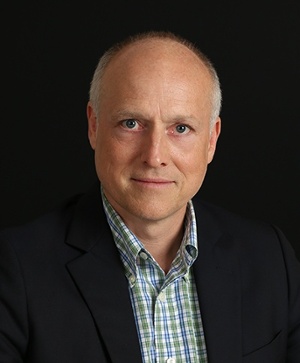
In 1996, Michael K. Cobb and his business partner formed a company, Exotic Caye International, to provide loans to North Americans purchasing properties in Belize, Honduras, Costa Rica, and throughout the region. With a strong focus on consumer need, Mr. Cobb accurately predicted the growing demand for high quality, residential product for North American “baby boomer” retirees in the region. He led the group into real estate development and created a holding company called ECI Development for several properties, including a resort on Ambergris Caye, Belize. Michael speaks at dozens of international conferences annually about offshore real estate finance, development, and ownership. He was a consultant to The Oxford Club, hosted a weekly radio program, contributes regularly to overseas publications, sits on the board of several international companies, gives counsel to various real estate projects throughout Central America, and serves on the Board of Directors and the President’s Advisory Group for the National Association of Realtors.
Love the show? Subscribe, rate, review, and share!
Join The Wealth Standard community today:
